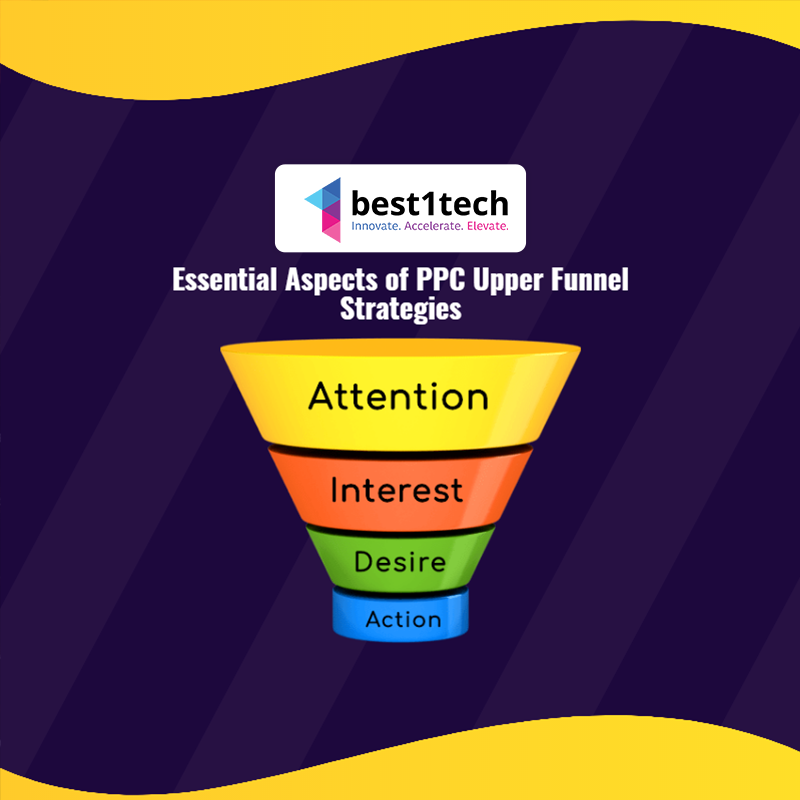If you ask anyone who manages or works on PPC campaigns, why they prefer to do so, and the answer you will get is almost always focused on the satisfaction that comes from running the campaign and seeing the actual numerical results. ROI of one click is easier to evaluate than that of the rest of the digital marketing channels. And light-year is easier than any traditional marketing efforts like billboards or TV commercials.
This leads to a higher level of search intent to focus on mid-low-funnel strategies because the same is true of those ROI results. Because of the increased level of ROI transparency, there is little room to spend advertising dollars on anything, as it is not as clear as the day when last-click returns are just as strong. PPC visitors are 50% more likely to purchase something than organic visitors according to unbounce.
Why Are Upper Funnel Strategies Important?
Aiming only on low-funnel PPC strategy limits the performance as you address one part of the marketing funnel, that can run dry at the time of doing nothing to fill the funnel back-up. Digging out is the only option to see what currently exists on the bottom of the funnel with the help of paid search, it is enough not to grow or to sustain.
Experiencing growth at the top of the funnel with the help of strategies focus on public awareness for your product/service/brand, which means you are creating a pool of more potential customers down the line. You may see little lesser last-click returns from strategies like that, but for that, you do not have to stop the campaign for brand awareness.
Growing at the funnel’s top can bring the output of growth in overall search volume for the brand. As users enter at the top of the funnel, advertisers could see things like branded searches as a low-funnel action. There can be steps along the way while being nurtured by the user, but this is healthy marketing.
With this in mind, top-funnel plans are crucial at the time and for advertisers too than others.
How Do We Know When It’s Time for Upper-Funnel PPC?
At the time when the budget is low, it makes sense to enhance the lower-funnel return strategies. But brand awareness can be built even when the budget is limited, a strong case for the top of the funnel. Here are some instances where you only want to consider a change strategy with one-and-true, low-funnel efforts.
When the branded search impression share remains constant or increases, but the impression volume decreases.
When you’ve massively optimized all current search campaigns and the only chance of growth is adding more keywords, which are long-tail.
When you constantly do not reach target budgets, but there is no higher options to buy on the search network.
When Google Trends shows that your brand is going down or your top non-branded words/topics, or both.
These are the signs which show that the bottom-funnel is reducing, and you have to push the efforts to fill it back in the earliest possible time.
Upper-Funnel PPC Strategies:
Upper-funnel marketing efforts are most thought of as performance and video. Of course, there are other PPC marketing strategies to look upon, but performance strategy is a great way to get to know and find new audiences. So for now, let’s concentrate there.
When it is about Google Display Network, look upon the various audiences that users may first touch with a new one. Audience like:
- Affinity and Demographics off of Audience Insights
- Similar Audiences to Remarketing Lists
- Custom Intent (In-market + Keywords)
- In-market
When you research the audience to target, think about sending the appropriate message to that audience and decide which type of ad formats would be best with them. Ad formats such as:
- Discovery Ads (responsive display + video)
- Gmail Ads
- Responsive Display Ads
- Video Ads for YouTube
Such ads are available in campaign types like display and video that are full of bidding plans to select from. Since the main aim of these campaigns is an exposure of the brand, rather than last-click conversions look for the plan that matches overall goals.
- Maximize Clicks
- Target CPM
- Pay-Per-Conversion
Essential things to look upon when implementing Upper-Funnel Strategy:
An essential thing to look upon before going down this path is that proper expectations are being set. You are likely to get last-click returns at a certain level with the help of your PPC budget. But keep in mind that is not the aim here. The goal is to uncover new qualified users for the organization that you can convert with the time.
- Attribute: Look for the different models of attribution that better reflects this situation in the funnel.
- Goals: To achieve success, have clear goals that suit perfectly with the plan. Do not use the CPA or ROAS goals, which you use for lower-funnel plans. They will misrepresent the effectiveness of the campaigns, and more importantly, they will disappoint.
- KPI’s: Consider which upper-funnel KPIs you should look for. Instead of conversion-focused KPIs, check out the engagement key points such as time on site, pages per session, new vs. returning users, or very few assisted conversions metrics.
Summing up:
None of this has the meaning that it downlines the benefit of PPC: Google can help high-level users search for low-funnel keywords and reach them very quickly and effectively. These strategies need to be capitalized. But as your low-funnel strategy enhances and nurture, the requirement for a full-funnel balanced approach grows. Ignoring this will stop or limit the long-term potential of PPC marketing stack.
We at Best1Tech offers, best PPC services that helps our clients in getting broader online presence and quality leads in their sales funnel.
Contact us now.

